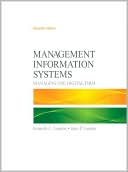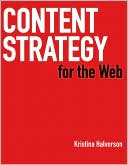Winning the Hardware-Software Game: Using Game Theory to Optimize the Pace of New Technology Adoption
“Many books discuss high-tech decision making, but this is the only book I know of that provides a systematic approach based on objective analysis.”\ –Matthew Scarpino, author of Programming the Cell Processor\ “This book offers a unique approach to analyzing business strategy that changes the focus and attitude to a lively and fun exercise of treating business strategy as a game.”\ –Dave Hendricksen, Architect, Thomson-Reuters\ USE GAME THEORY TO SOLVE THE #1 PROBLEM THAT CAUSES NEW...
Search in google:
“Many books discuss high-tech decision making, but this is the only book I know of that provides a systematic approach based on objective analysis.”–Matthew Scarpino, author of Programming the Cell Processor“This book offers a unique approach to analyzing business strategy that changes the focus and attitude to a lively and fun exercise of treating business strategy as a game.”–Dave Hendricksen, Architect, Thomson-ReutersUSE GAME THEORY TO SOLVE THE #1 PROBLEM THAT CAUSES NEW TECHNOLOGIES TO FAIL IN THE MARKETPLACE: LACK OF COORDINATIONToo many advanced technologies fail the test of adoption, at immense cost to their creators and investors. Why? Many new technologies are launched into complex ecosystems where hardware, software, and/or connectivity components must work together–for instance, next-generation gaming and video platforms that can only succeed if they offer attractive, compatible content. Often, users aren’t ready to give up existing systems, and content or connectivity providers aren’t ready to move away from existing markets. In either case, the real issue is a lack of coordination. Fortunately, coordination problems have specific, proven solutions, and Winning the Hardware—Software Game shows you exactly how to find them.Drawing on advanced ideas from game theory, economics, sociology, and business strategy, author Ruth D. Fisher presents a systematic framework for identifying, assessing, and resolving coordination problems among all the participants in a product ecosystem. Writing in plain, nontechnical, nonmathematical English, Dr. Fisher helps you discover specific steps that will prepare your customers and partners for successful adoption. Using these techniques, you can shape strategy, systematically reduce risk, and dramatically increase profitability.Topics covered in this book include: Discovering the forces that drive or delay adoption by users and content providers Understanding networks, network effects, switching costs, technology compatibility, and other crucial issues Speeding the pace of adoption, and getting to the “tipping point” sooner Clarifying and restructuring the incentives that motivate users and software providers Engineering new systems to maximize the likelihood of adoption Creating expectations of adoption and decreasing the relative value of older systems Learning from Apple Newton versus Palm Pilot, HD DVD versus Blu-Ray, and other significant technology battles Leveraging lock-in, path dependence, standardization, and first-mover advantageWith so much at stake, Winning the Hardware—Software Game is a required resource for everyone concerned with new technology adoption–executives, strategists, R&D leaders, marketers, product managers, industry analysts, and investors alike.
Preface xiAcknowledgments xvAbout the Author xviiChapter 0 Introduction xix0.1 Game Theory and the Chicken-and-Egg Problem xxii0.2 Organization of the Book xxvChapter 1 Network Effects 11.1 Definition and Sources of Network Effects 21.2 Switching Costs 71.3 Compatibility 111.4 Network Effects and the Hardware-Software Game 15Chapter 2 Technology Adoption Lifecycles 172.1 Production and Consumption Lifecycles 182.2 Lifecycles of Network Effects 212.3 Technology Replacement Lifecycles 282.4 Critical Mass 332.5 Technology Adoption Lifecycles and the Hardware-Software Game 39Chapter 3 Technology System Users 413.1 User Demand for New Technology Hardware 423.1.1 Installed Base 443.1.2 The Stock of Content Available 483.1.3 Price of New Technology Hardware and Content 513.1.4 Numerical Example of Demand for New Technology Hardware 553.2 User Demand for New Technology Content 613.2.1 Installed Base 613.2.2 The Stock of Content Available 623.2.3 Numerical Example of Demand for New Technology Content 643.3 Summary of User Demand for New Systems Hardware and Content 66Chapter 4 Technology System Suppliers 714.1 Provision of Hardware 724.2 Provision of Content 82Chapter 5 The Hardware-Software Game 875.1 Introduction to Game Theory 875.2 Definition of the Hardware-Software Game 925.3 Assumptions about Market Dynamics 955.3.1 Technology Value and Market Size 955.3.2 Sensitivity to Price 975.3.3 Strength of Network Effects for Hardware 985.3.4 Strength of Network Effects for Software 995.3.5 Degree of Content Complementarity 1005.4 Overview of the Game 1015.5 Simulation Categoriesand Scenarios 1045.6 Profit Frontiers by Category of Network Effects 1095.6.1 Hardware Manufacturers' Profits 1165.6.2 Software Providers' Profits 1295.7 Impact of Speed of Adoption on Profitability 1355.8 Sensitivity of Profits to Changes in Market Drivers 1395.9 General Implications 1455.9.1 Overall Profit Potential 1465.9.2 Profits and Market Environment 1465.9.3 Timing of Profits 1475.9.4 Network Effects Dynamics 1485.9.5 Value Extraction 149Chapter 6 Addressing the Chicken-and-Egg Problem 1516.1 Statement of the Problem 1526.2 General Responses to the Chicken-and-Egg Problem 1566.2.1 Engineer New Systems for Maximum Likelihood of Adoption 1576.2.2 Create Expectations of New System Adoption 1576.2.3 Establish a Good Reputation 1616.2.4 Decrease Relative Value of Old Systems 1616.2.5 Increase Relative Value of New Systems 1636.2.6 Switching Costs 1726.2.7 Summary of General Responses 1806.3 Scenario-Specific Responses to the Chicken-and-Egg Problem 1816.3.1 Market Size 1826.3.2 User Sensitivity to Price 1836.3.3 Direct Network Effects 1846.3.4 Indirect Network Effects 1856.3.5 Summary of Scenario-Specific Responses 186Chapter 7 Summary, Applications, and Extensions 1897.1 Key Points from the Analysis 1897.2 Tools for Applying the Model 1927.2.1 Assessing Relative Sizes and Sources of New System Values 1927.2.2 Better Understanding User Demand for New System Hardware 1947.2.3 Better Understanding Optimal Allocations of Content 1957.3 Extensions of the Analysis 1967.3.1 Estimates of Network Effect Elasticities 1967.3.2 Network System Routes to Market 196Appendix A Model of the Hardware-Software Game 199A.1 Definition of Key Terms 199A.1.1 Technology User Dynamics 199A.1.2 Technology Content Dynamics 199A.2 User Demand Functions 200A.2.1 User Demand for New Technology Hardware 200A.2.2 User Demand for New Technology Content 202A.3 Provision of Hardware 203A.4 Provision of Content 205A.5 Three-Period Model 207A.5.1 Derivation of the Hardware Manufacturer's Problem 207A.5.2 Derivation of the Content Provider's Problem 213A.5.3 Equilibrium 214Appendix B Further Information 217B.1 Adoption of VHS versus Betamax 217B.2 Adoption of Next-Generation DVD 218B.3 Adoption of HDTV 218B.4 Adoption of Consumer Durables 220B.5 Networks and Network Effects 220B.6 Lock-in and Path Dependence 222B.7 Standardization and Compatibility 223B.8 Innovation and Adoption of New Technologies 223B.9 Product Lifecycles 225B.10 Critical Mass 225B.11 First-Mover Advantages in Adoption of New Technologies 226B.12 Social Networks and Technology Adoption 227References 229Index 233








